It’s miles from the West Side museum district. Instead of docents it has mechanics. It pays homage to pilots, not pointilists. And on its walls hang propellers, not Picassos. But the Vintage Flying Museum is as interesting as any museum on West Lancaster.
Several of the museum’s airplanes have been restored to flight condition and/or kept in that condition by volunteers, many of them younger than the youngest of the planes they work on. As you walk among the airplanes on display, several dating back to World War II, the volunteers go about their work, skittering over wings, peering into engine cowlings, filling, draining, tightening, loosening. As the volunteers move in and out of the shadows they begin to look like Van Johnson or Spencer Tracy.
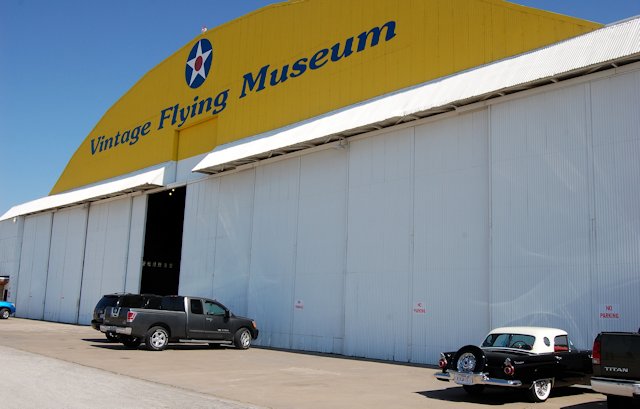 The museum is housed in a hangar at Meacham Field. A big hangar: It holds a dozen or so of the museum’s airplanes—fighters, trainers, light bombers. But the other day the hangar housed the plane it was built for: the B-29 Superfortress heavy bomber. That notch above the doors accommodates the B-29’s twenty-seven-foot-tall tail.
The museum is housed in a hangar at Meacham Field. A big hangar: It holds a dozen or so of the museum’s airplanes—fighters, trainers, light bombers. But the other day the hangar housed the plane it was built for: the B-29 Superfortress heavy bomber. That notch above the doors accommodates the B-29’s twenty-seven-foot-tall tail.
FIFI, the B-29 of the Commemorative Air Force, was on display at the museum while the plane was being serviced. FIFI is the only flying B-29 in the world. In fact, FIFI flew out on October 21 for an air show in New Orleans, but she will return to the museum.
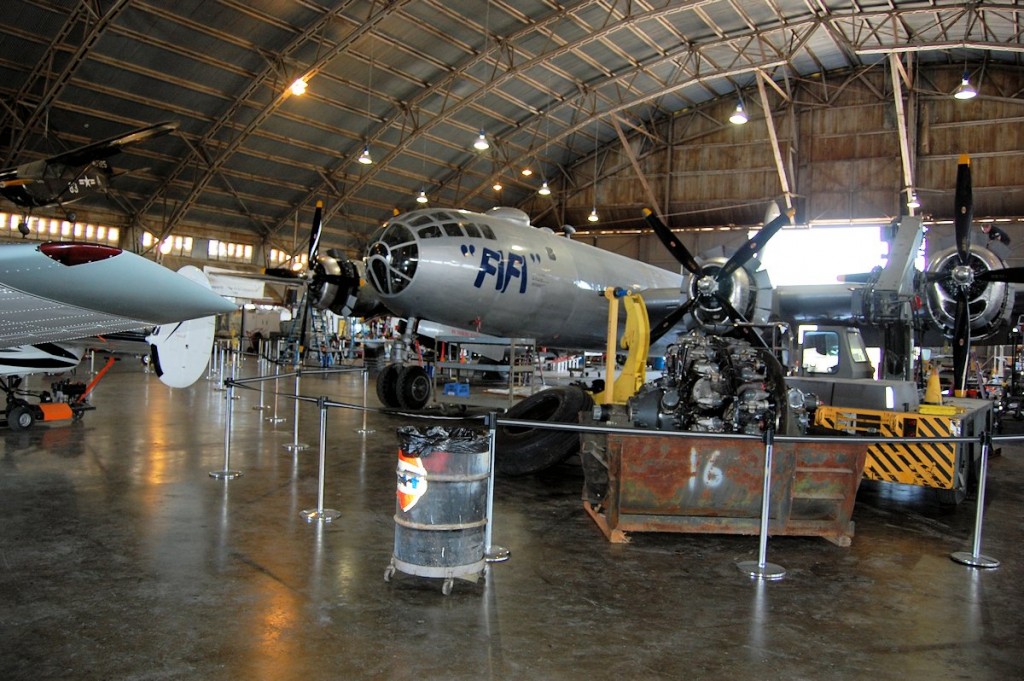
 FIFI is named for Josephine Agather, wife of Vic Agather, who was instrumental in finding, rescuing, and financing restoration of the airplane.
FIFI is named for Josephine Agather, wife of Vic Agather, who was instrumental in finding, rescuing, and financing restoration of the airplane.
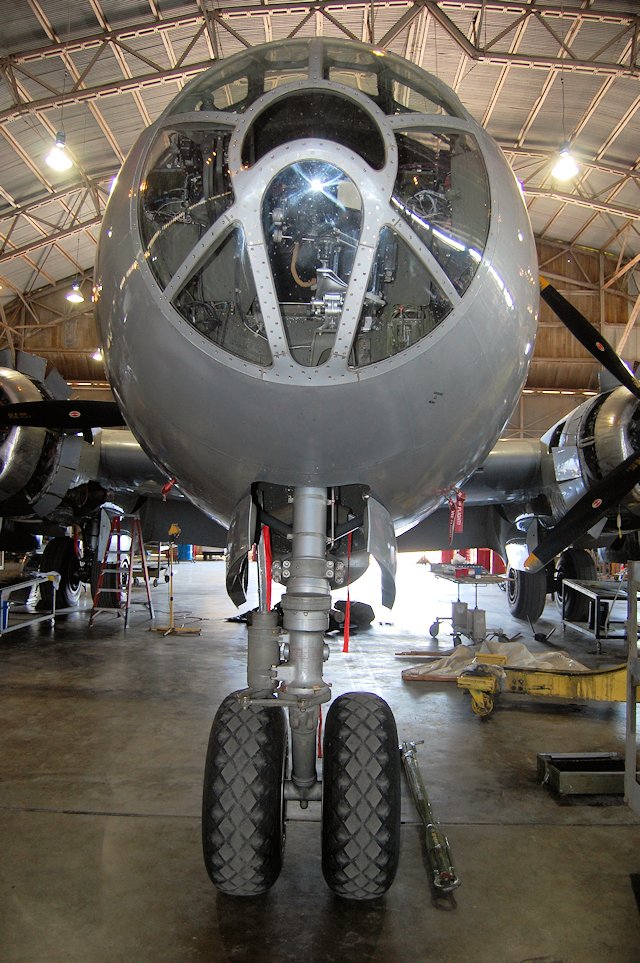 For all you propellerheads, here are the measurements of the B-29 heavy bomber: 141, 27, 99. Va-va-boom! That’s wing span, tail height, and fuselage length in feet. Bomb load: 20,000 pounds; loaded weight: 120,000 pounds; powerplant: four Wright 2,200-horsepower radial engines; maximum speed: 357 mph; range: 3,250 miles; crew: eleven (pilot, copilot, bombardier, flight engineer, navigator, radio operator, radar observer, right gunner, left gunner, central fire control, tail gunner). Cost to operate per hour: about $9,000.
For all you propellerheads, here are the measurements of the B-29 heavy bomber: 141, 27, 99. Va-va-boom! That’s wing span, tail height, and fuselage length in feet. Bomb load: 20,000 pounds; loaded weight: 120,000 pounds; powerplant: four Wright 2,200-horsepower radial engines; maximum speed: 357 mph; range: 3,250 miles; crew: eleven (pilot, copilot, bombardier, flight engineer, navigator, radio operator, radar observer, right gunner, left gunner, central fire control, tail gunner). Cost to operate per hour: about $9,000.
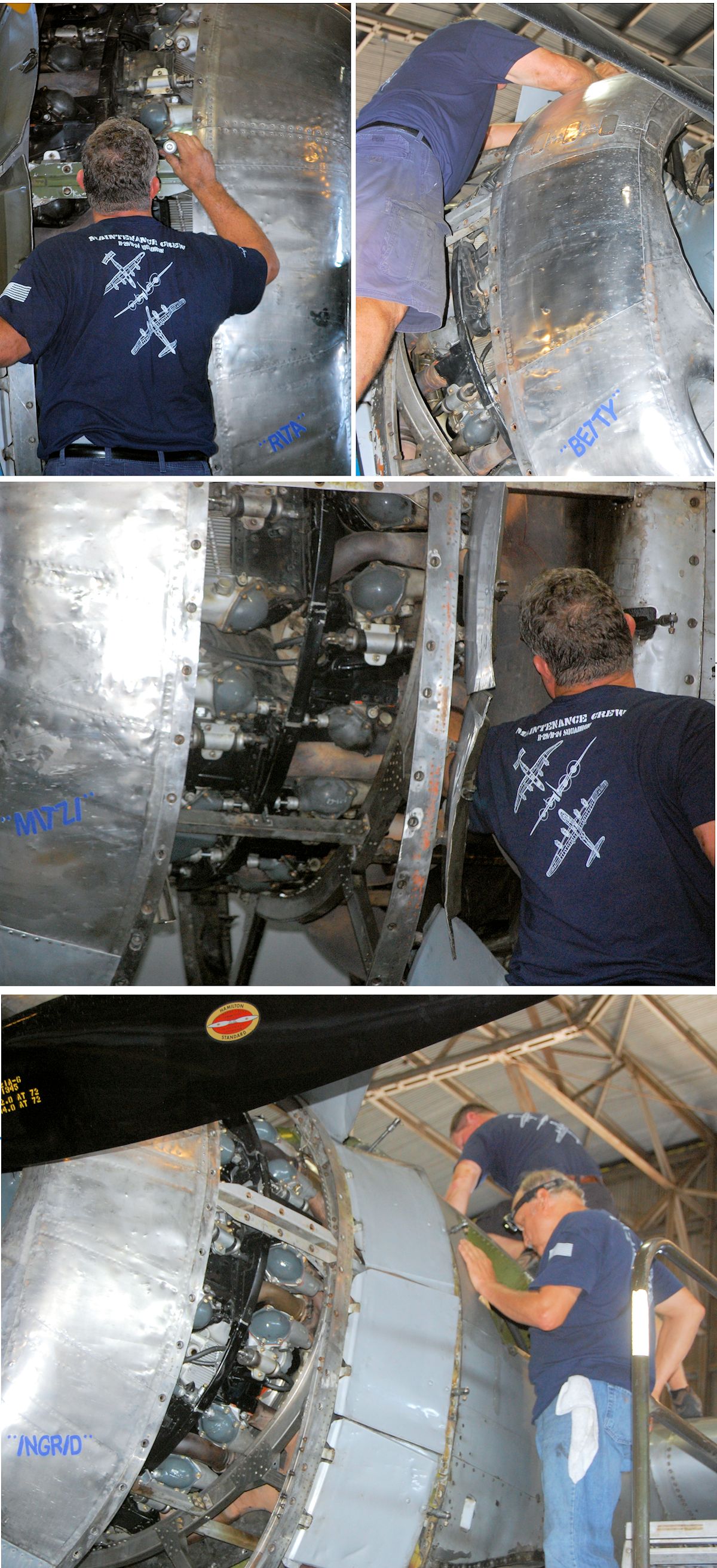 Each of FIFI’s engines is named for a Hollywood bombshell: Rita (Hayworth), Betty (Grable), Mitzi (Gaynor), Ingrid (Bergman).
Each of FIFI’s engines is named for a Hollywood bombshell: Rita (Hayworth), Betty (Grable), Mitzi (Gaynor), Ingrid (Bergman).
Video of FIFI landing at Meacham Field: FIFI on the Fly: A Phoenix on Final Approach
Elsewhere around the hangar:


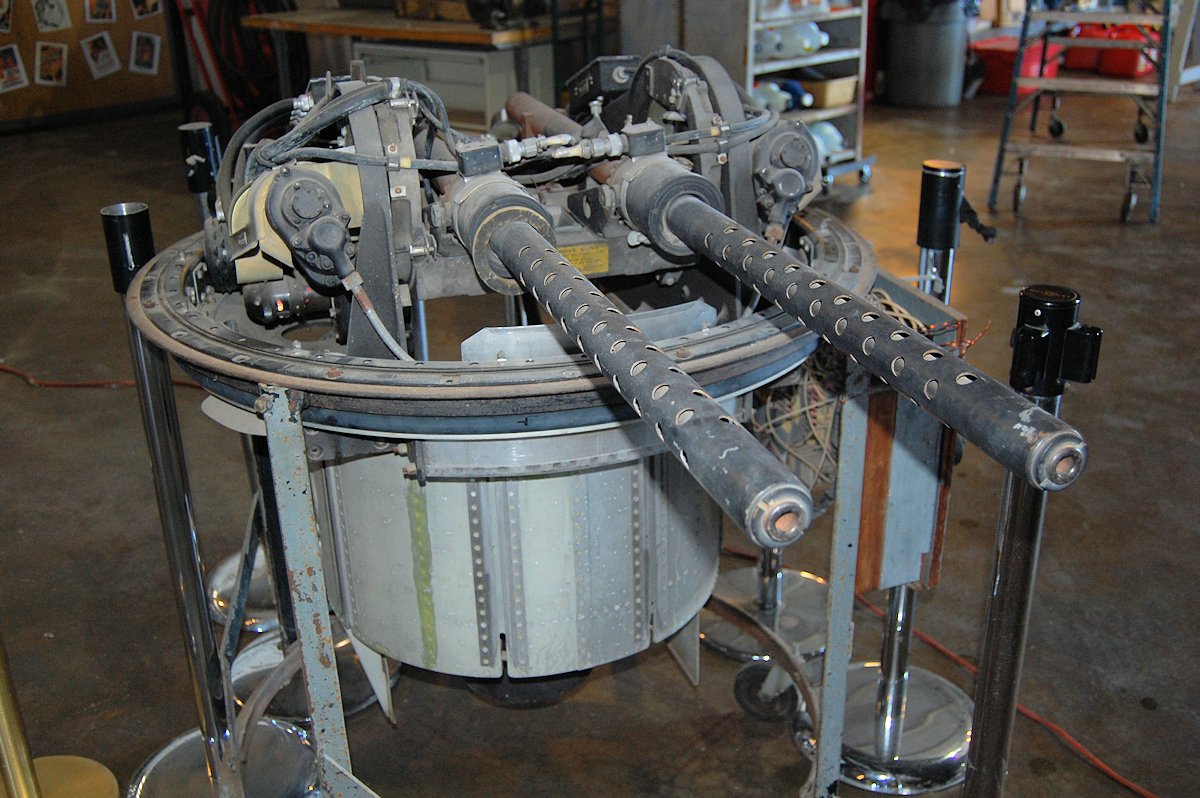
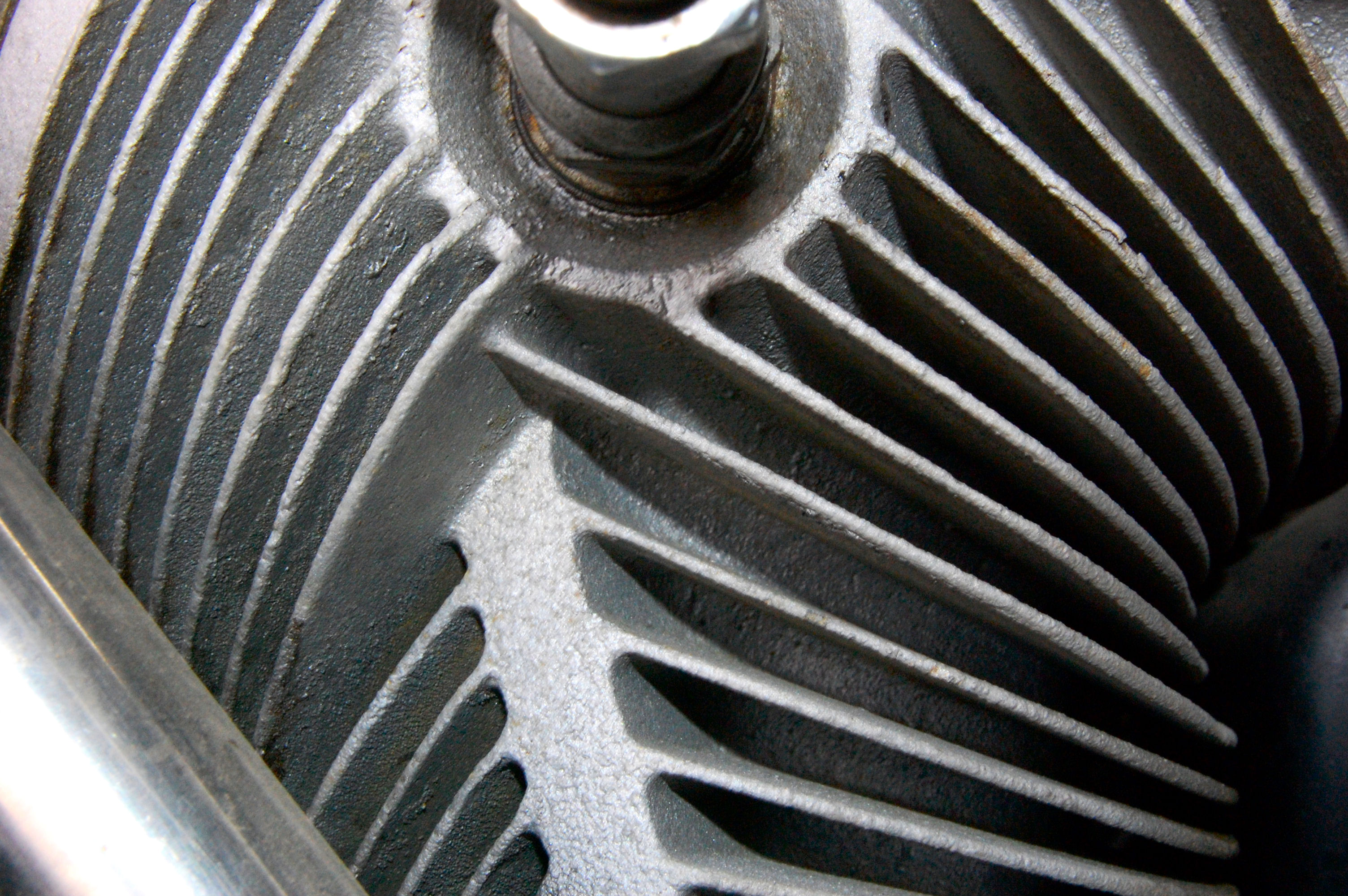 A bomb, an engine, turret guns, cylinder head cooling fins.
A bomb, an engine, turret guns, cylinder head cooling fins.
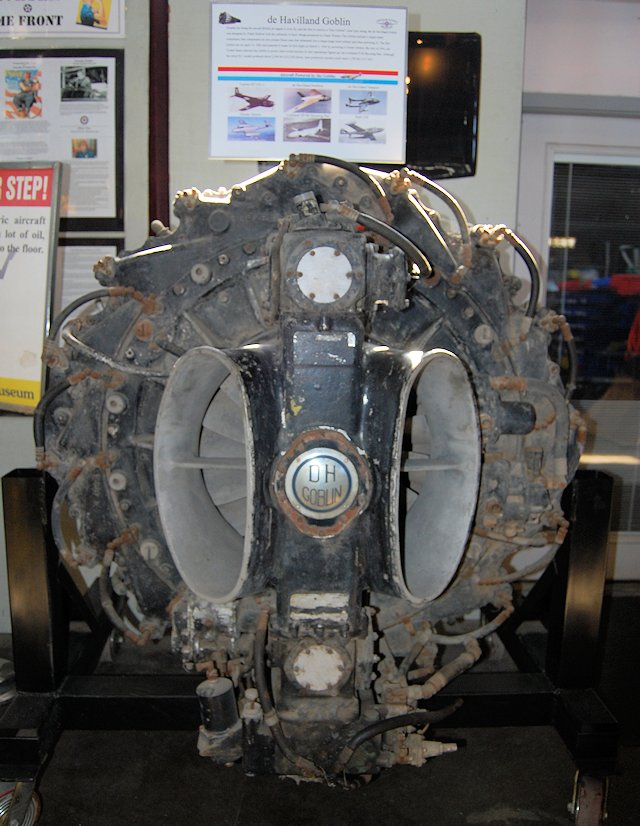 De Havilland Goblin turbojet engine of World War II.
De Havilland Goblin turbojet engine of World War II.
 Douglas C-47 Skytrain, a military version of the Douglas DC-3. The DC-3, introduced in 1935, is perhaps the most durable airplane ever built. In fact, the DC-3 may be well-nigh immortal. Many DC-3/C-47s are still in service around the world. This one, Southern Cross, is typical. It was built in 1941 and served in the Army during World War II. Then it was a domestic airliner. Then the president of Mexico bought it. Then a skydiving operator. Southern Cross now belongs to Greatest Generation Aircraft and is available for flights.
Douglas C-47 Skytrain, a military version of the Douglas DC-3. The DC-3, introduced in 1935, is perhaps the most durable airplane ever built. In fact, the DC-3 may be well-nigh immortal. Many DC-3/C-47s are still in service around the world. This one, Southern Cross, is typical. It was built in 1941 and served in the Army during World War II. Then it was a domestic airliner. Then the president of Mexico bought it. Then a skydiving operator. Southern Cross now belongs to Greatest Generation Aircraft and is available for flights.
 Wooden propeller of a Ryan PT-22 Recruit World War II trainer. PT-22s were nicknamed “Maytag Messerschmitts” because their low-rpm engine sounded like a washing machine. The Ryan company also built Charles Lindbergh’s Spirit of St. Louis (1927).
Wooden propeller of a Ryan PT-22 Recruit World War II trainer. PT-22s were nicknamed “Maytag Messerschmitts” because their low-rpm engine sounded like a washing machine. The Ryan company also built Charles Lindbergh’s Spirit of St. Louis (1927).
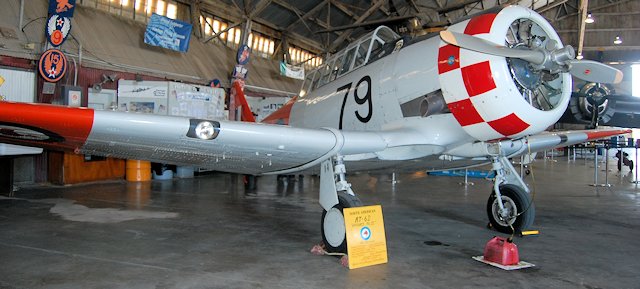 North American Aviation AT-6D Texan trainer. First built in 1935.
North American Aviation AT-6D Texan trainer. First built in 1935.
 AT-6D wheel wells.
AT-6D wheel wells.
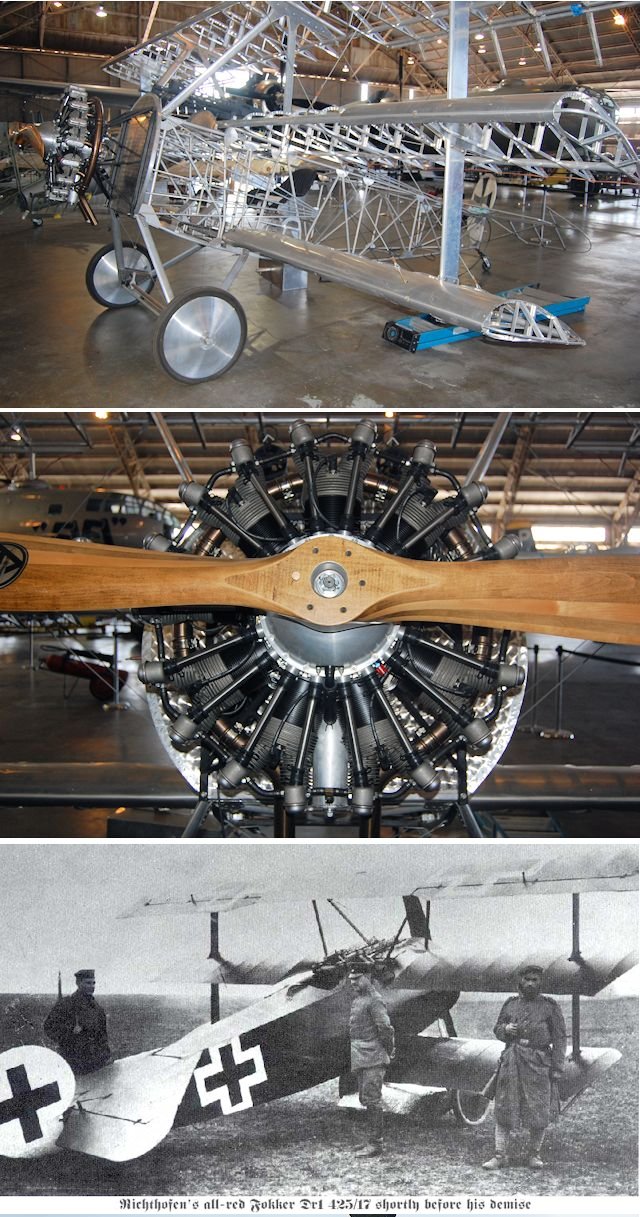 Metal frame and engine of a replica Fokker Dr.1 triplane of World War I. Bottom photo from Wikipedia shows the Fokker Dr.1 of Germany’s Manfred von Richthofen, the Red Baron. The real Fokker Dr.1 was made of wood and covered with fabric.
Metal frame and engine of a replica Fokker Dr.1 triplane of World War I. Bottom photo from Wikipedia shows the Fokker Dr.1 of Germany’s Manfred von Richthofen, the Red Baron. The real Fokker Dr.1 was made of wood and covered with fabric.
 Navy’s carrier-based EA-3B Skywarrior bomber.
Navy’s carrier-based EA-3B Skywarrior bomber.
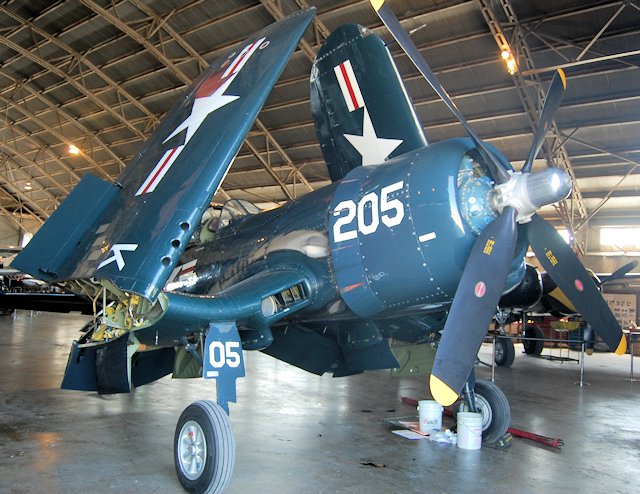 Navy’s Chance Vought F4U Corsair fighter of World War II.
Navy’s Chance Vought F4U Corsair fighter of World War II.
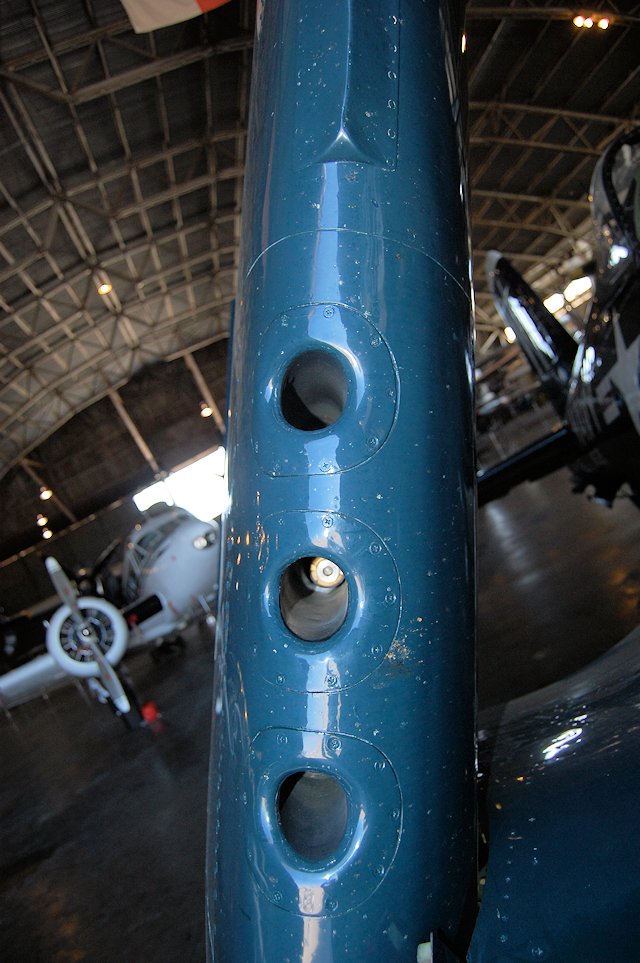 F4U wing gun ports.
F4U wing gun ports.
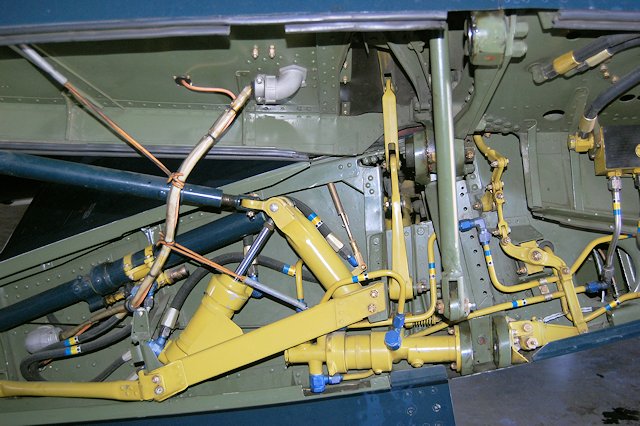 Innards of a folding wing of the F4U, designed for carrier use.
Innards of a folding wing of the F4U, designed for carrier use.
 Lockheed T-33 Shooting Star jet fighter trainer.
Lockheed T-33 Shooting Star jet fighter trainer.
 Lockheed T-33.
Lockheed T-33.
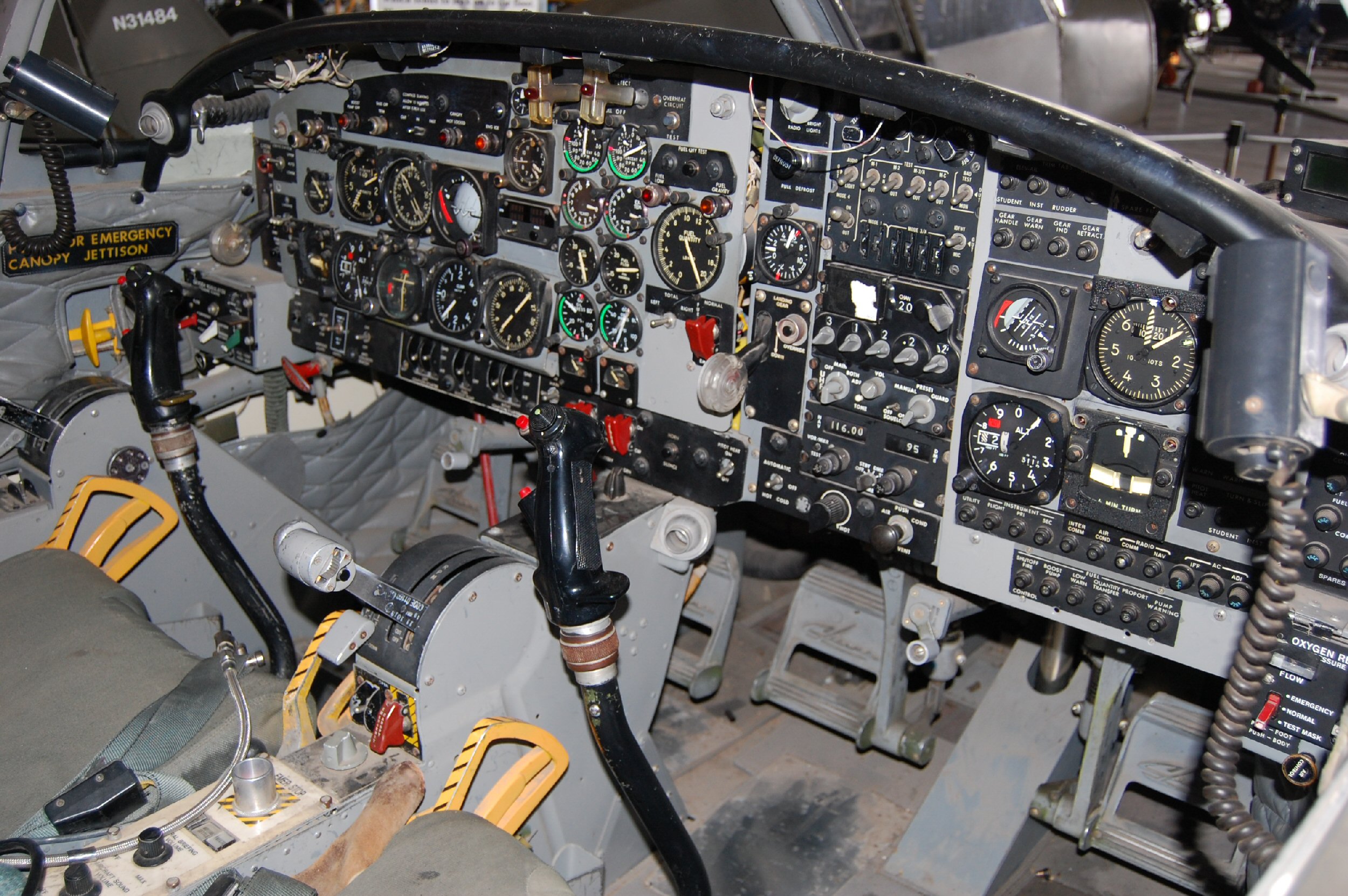 Cessna T-37 jet fighter trainer cockpit. Dual controls for student and instructor. Just like in driver’s ed.
Cessna T-37 jet fighter trainer cockpit. Dual controls for student and instructor. Just like in driver’s ed.
 Douglas A-26 Invader light bomber.
Douglas A-26 Invader light bomber.
 Douglas A-26 nose guns.
Douglas A-26 nose guns.
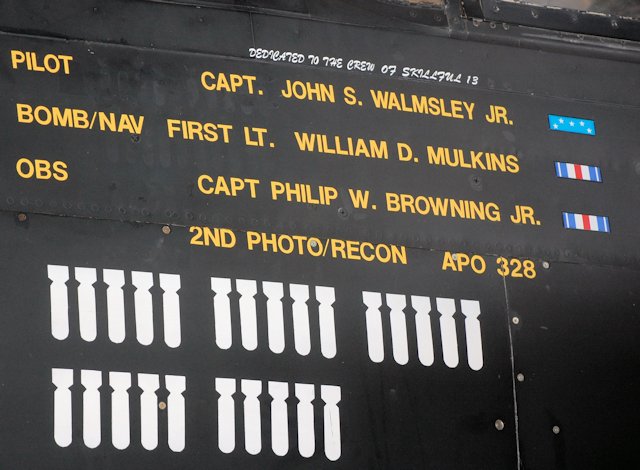 Douglas A-26. This A-26 honors pilot John S. Walmsley Jr. and his crew, who were killed in 1951 during the Korean War when their A-26 (Skillful 13) crashed. Skillful 13 was hit by anti-aircraft fire after bombing a Chinese supply train.
Douglas A-26. This A-26 honors pilot John S. Walmsley Jr. and his crew, who were killed in 1951 during the Korean War when their A-26 (Skillful 13) crashed. Skillful 13 was hit by anti-aircraft fire after bombing a Chinese supply train.
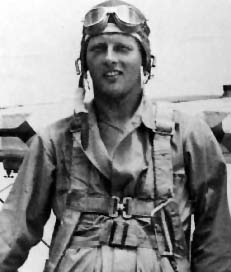 Captain John S. Walmsley Jr. was thirty-one years old. (Photo from Wikipedia.)
Captain John S. Walmsley Jr. was thirty-one years old. (Photo from Wikipedia.)
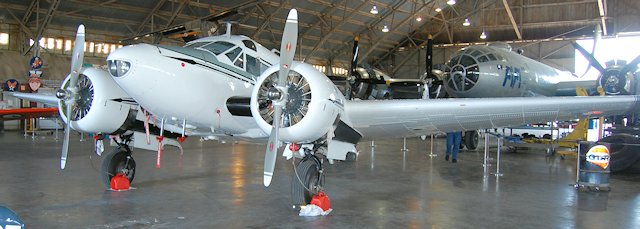 Beechcraft Super 18.
Beechcraft Super 18.
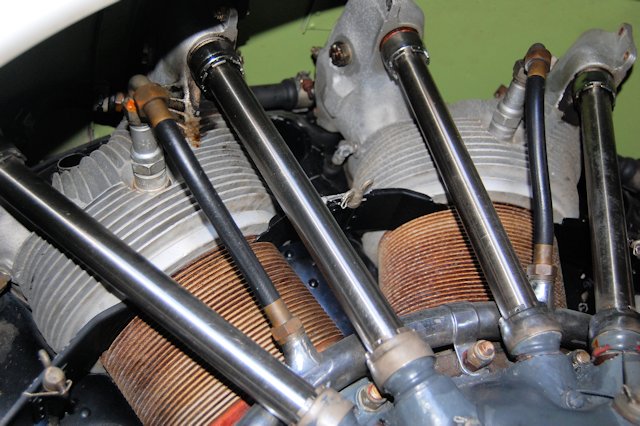 Beechcraft Super 18.
Beechcraft Super 18.
 Self(y)-propelled: Polished spinner of the Beechcraft Super 18.
Self(y)-propelled: Polished spinner of the Beechcraft Super 18.
Props to the folks of the Vintage Flying Museum, Commemorative Air Force, and Greatest Generation Aircraft who keep ’em flying.






I want to use your picture of the T -37 trainer jet cockpit in a book I am writing. Can you tell me how to obtain permission.
Art
Heck, just use it, Art. Glad to help.
I took my two 30 YO’s out there, probably about 20 years ago. Glad it’s still going strong, it is well worth a visit
And it’s different each time I go out there. Being a salvage yard addict, I miss the old airplane carcasses south of the hangar.